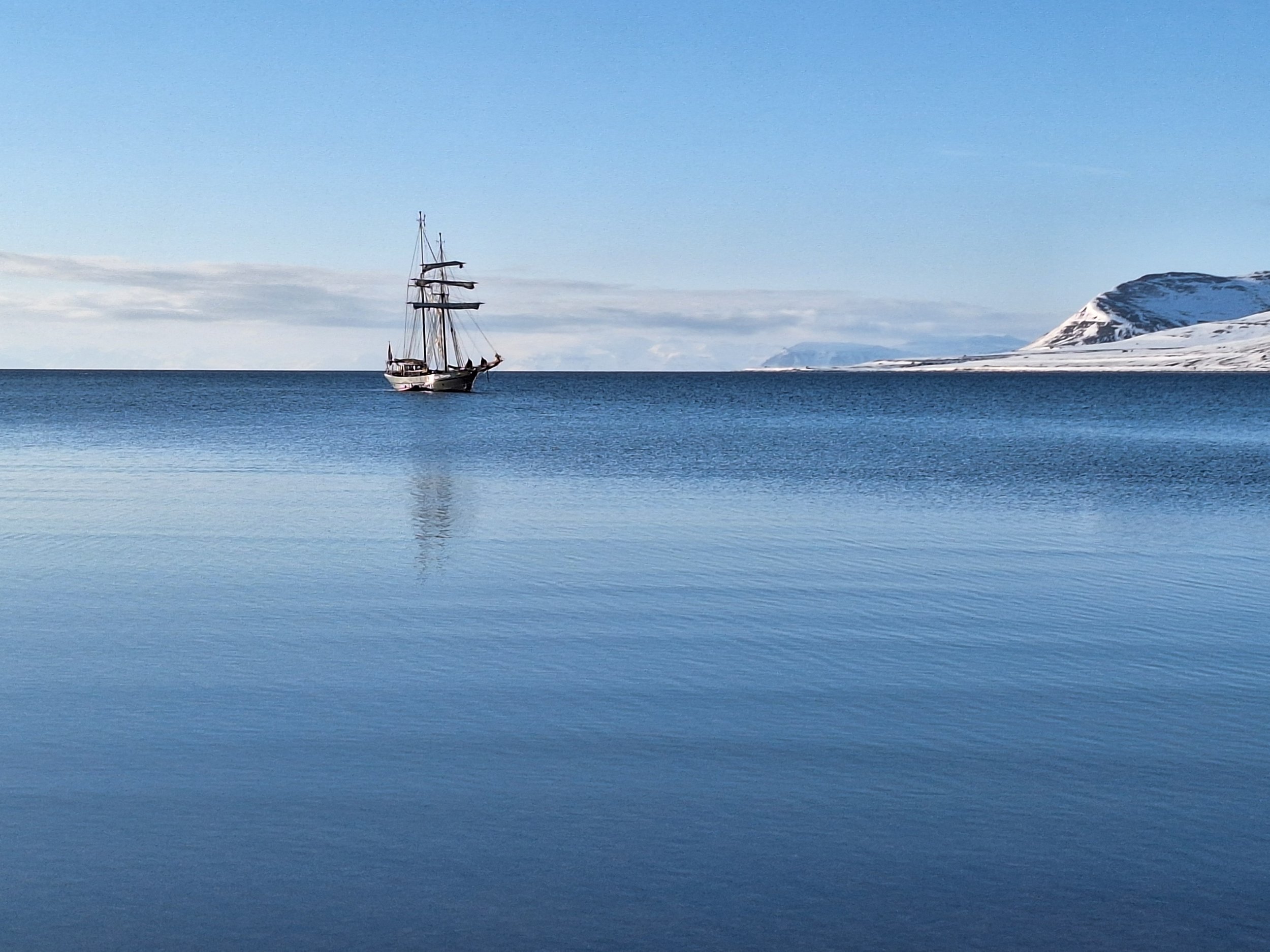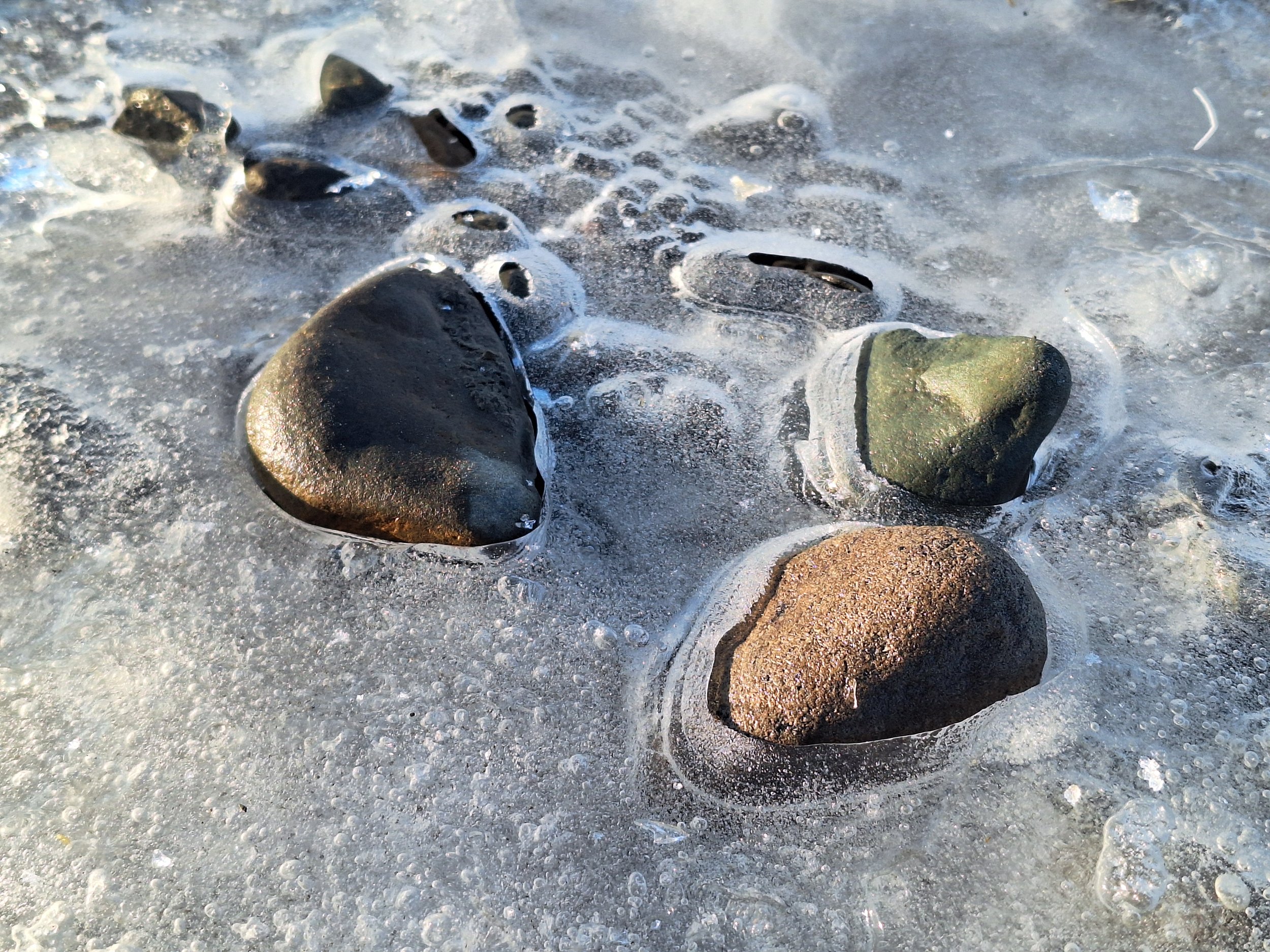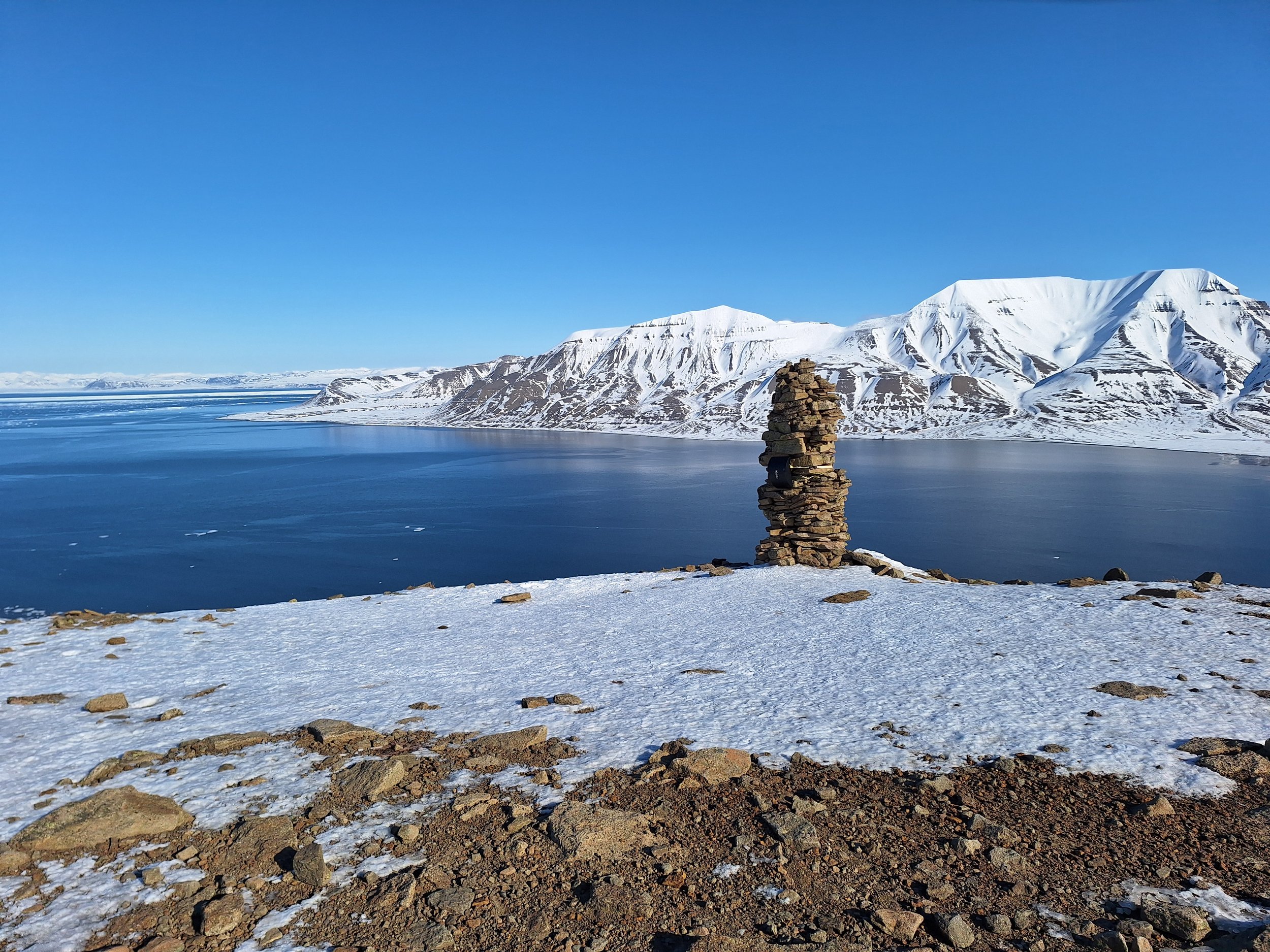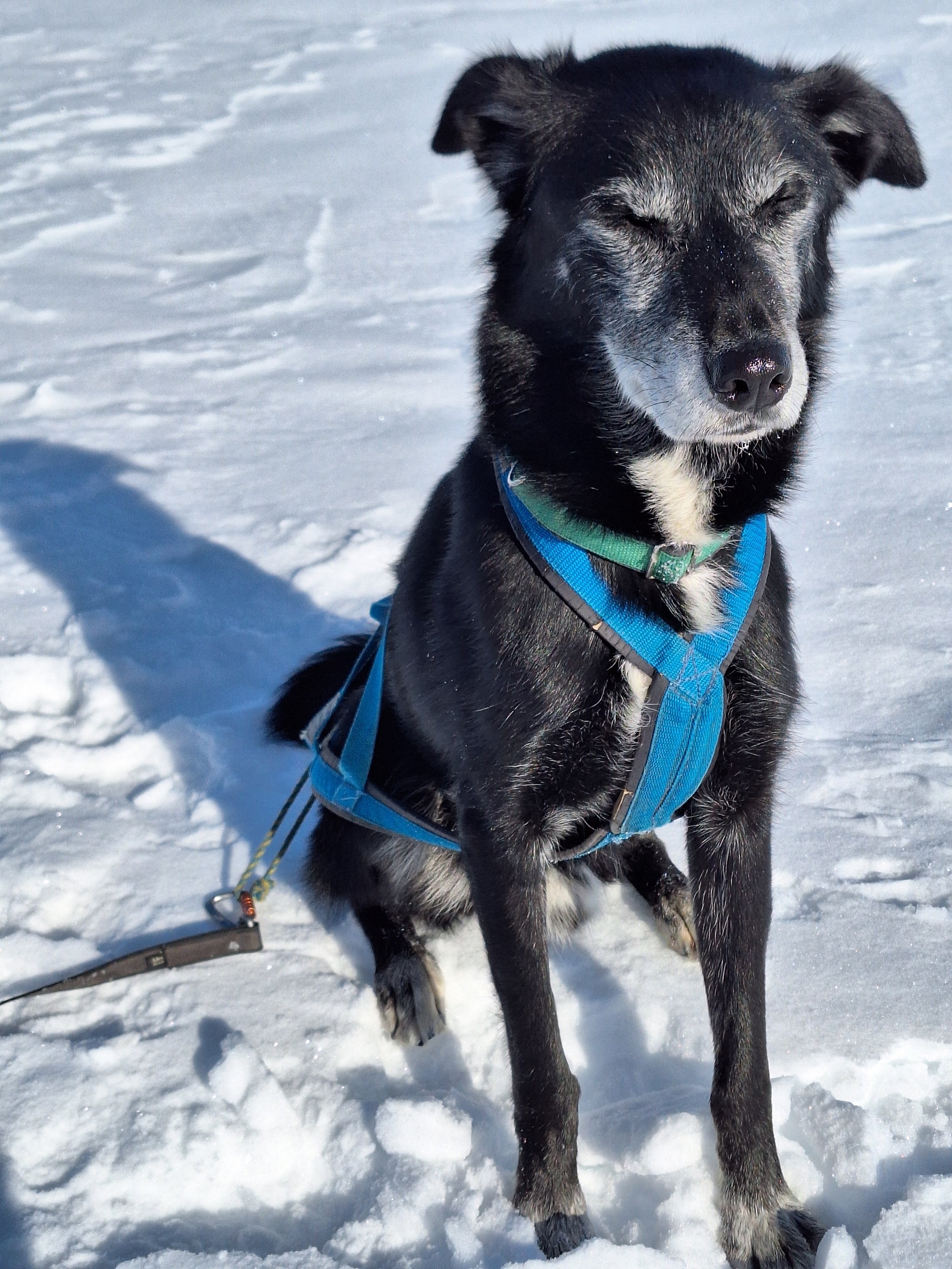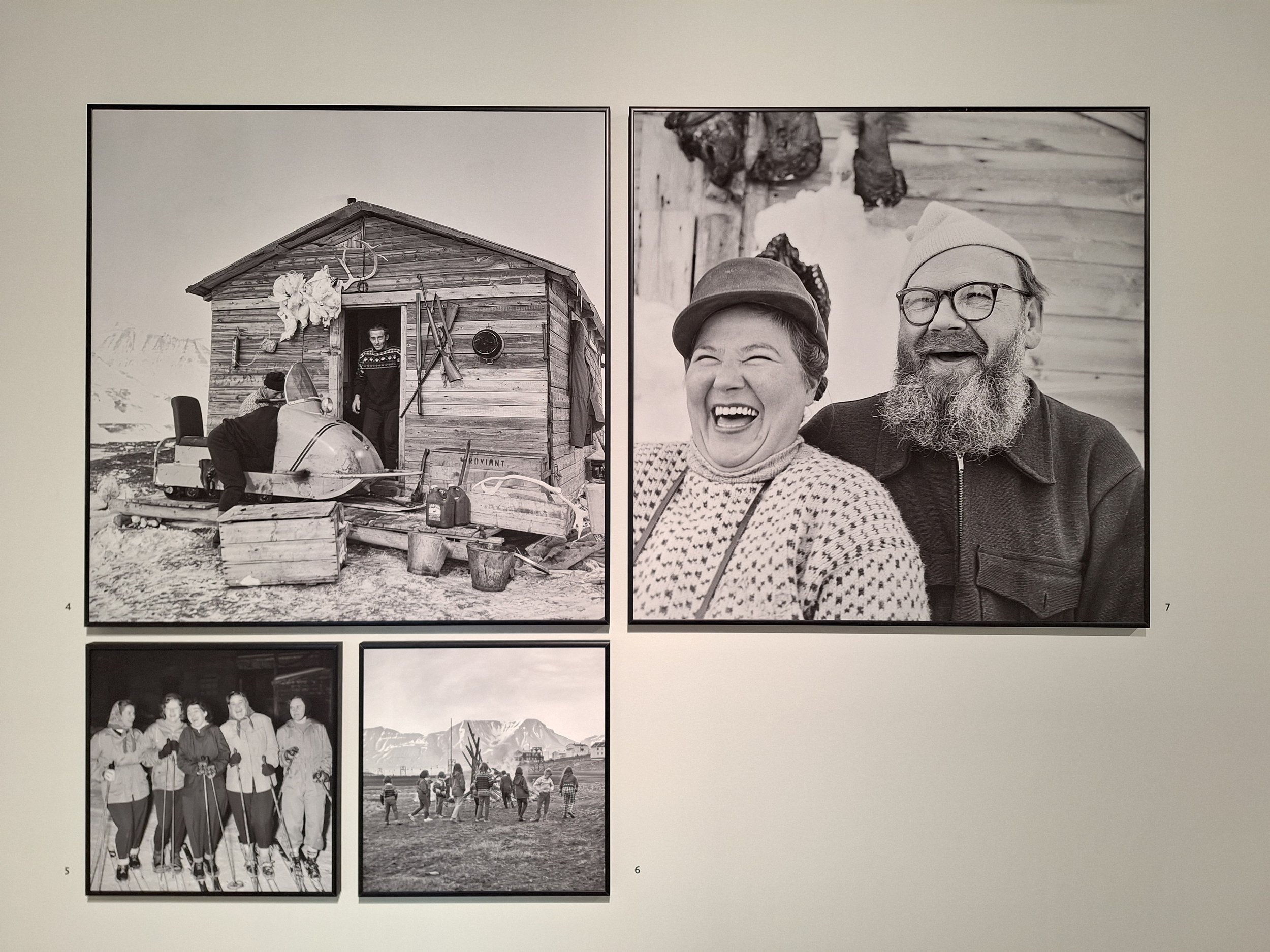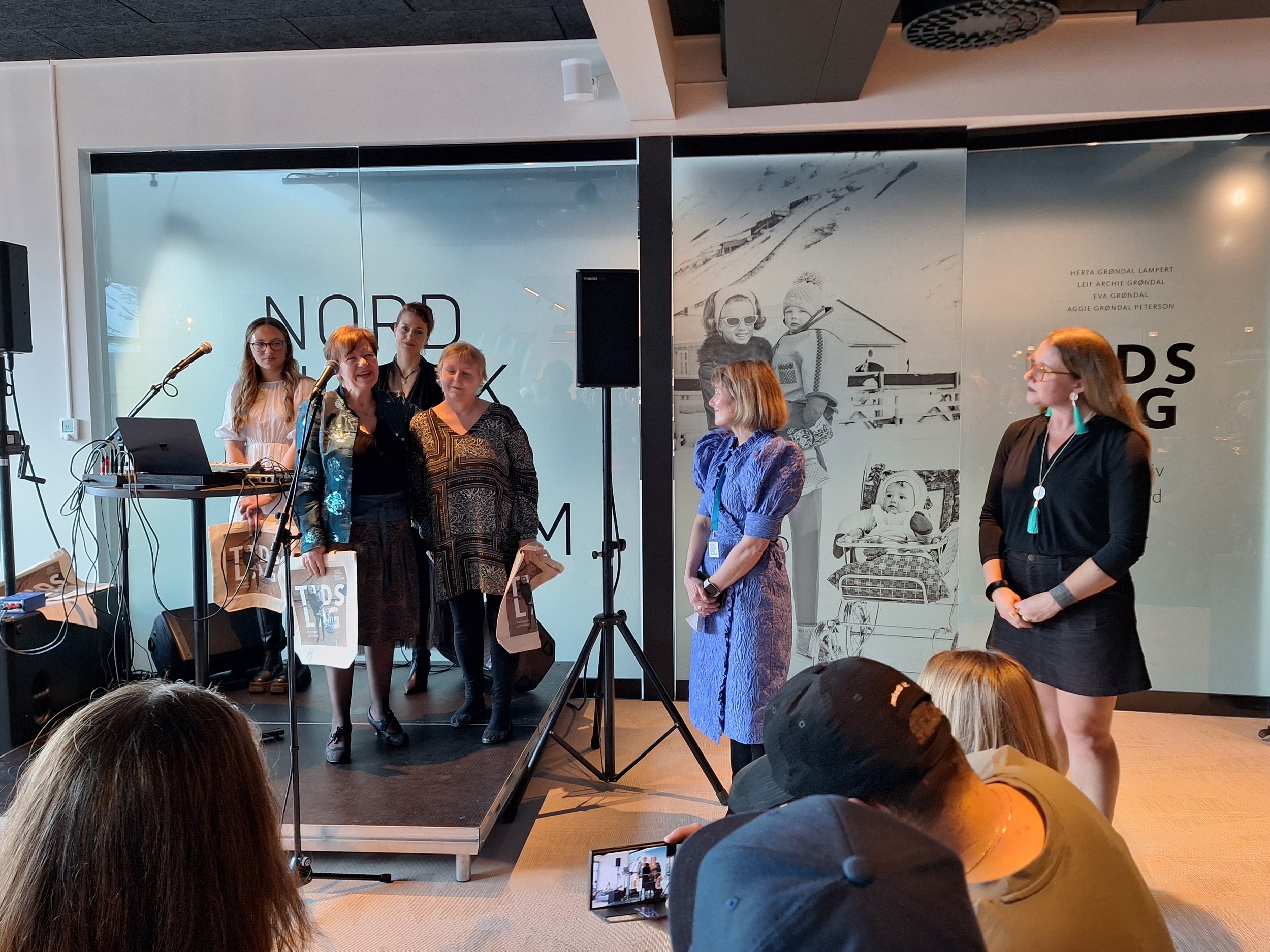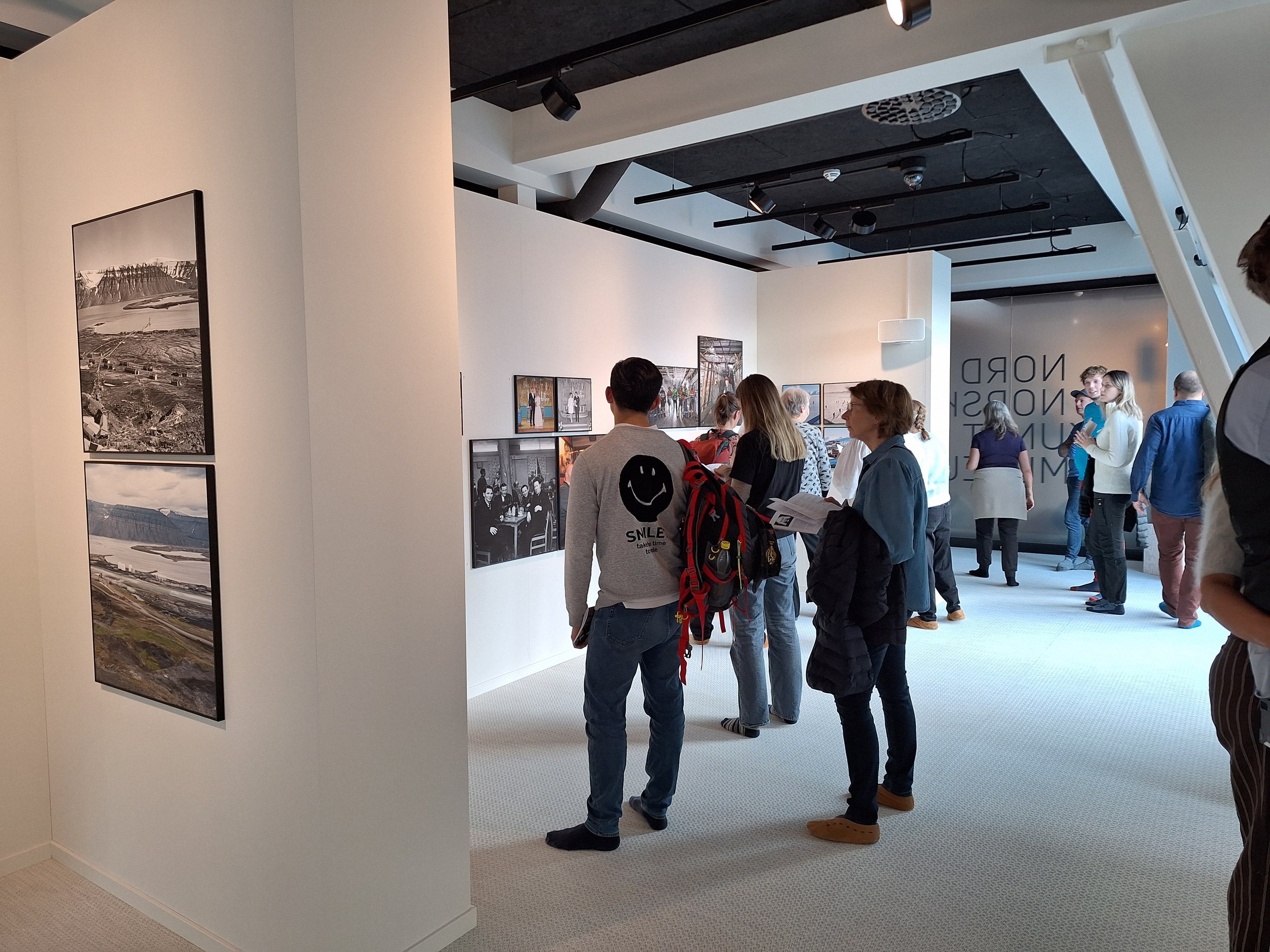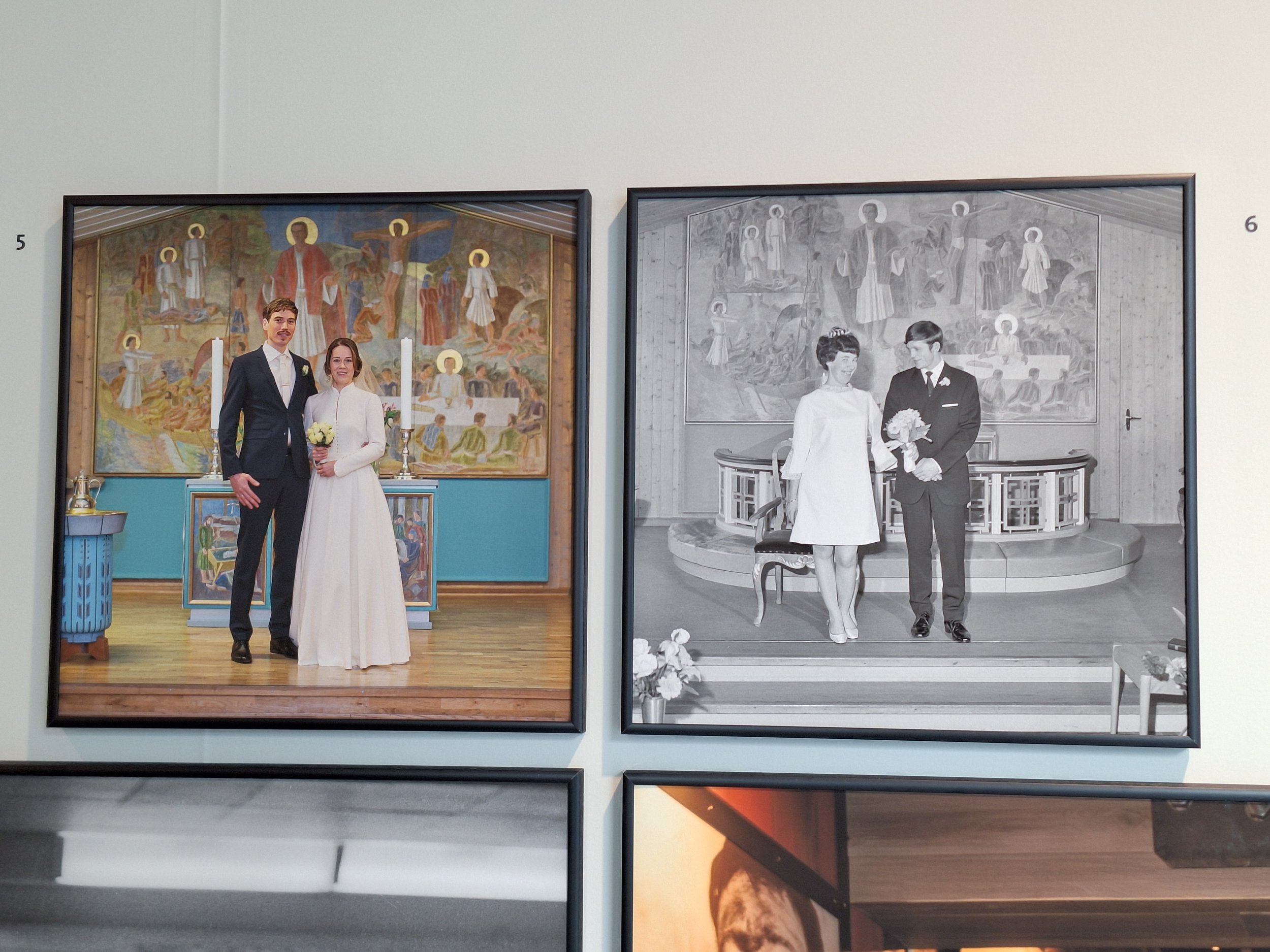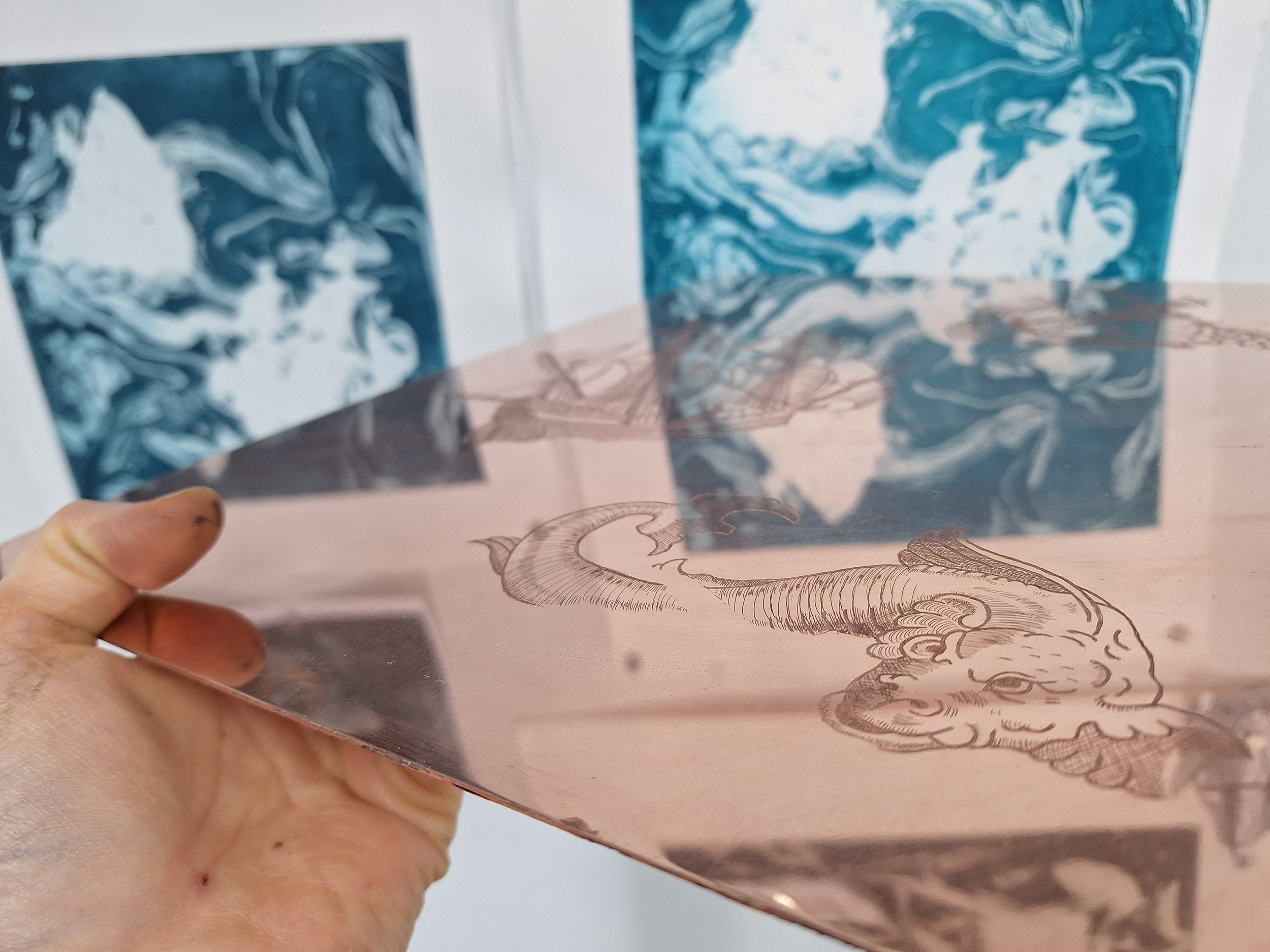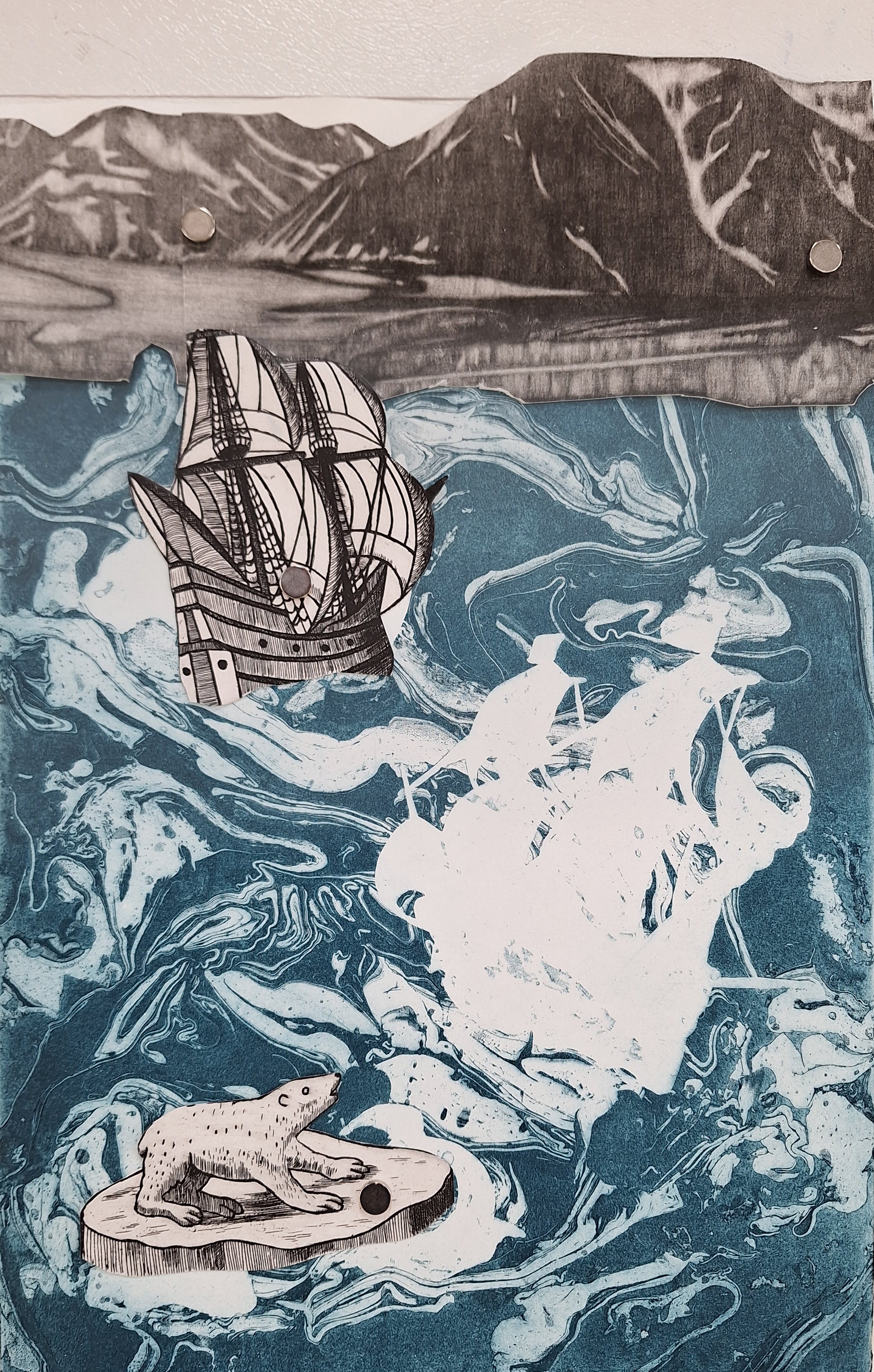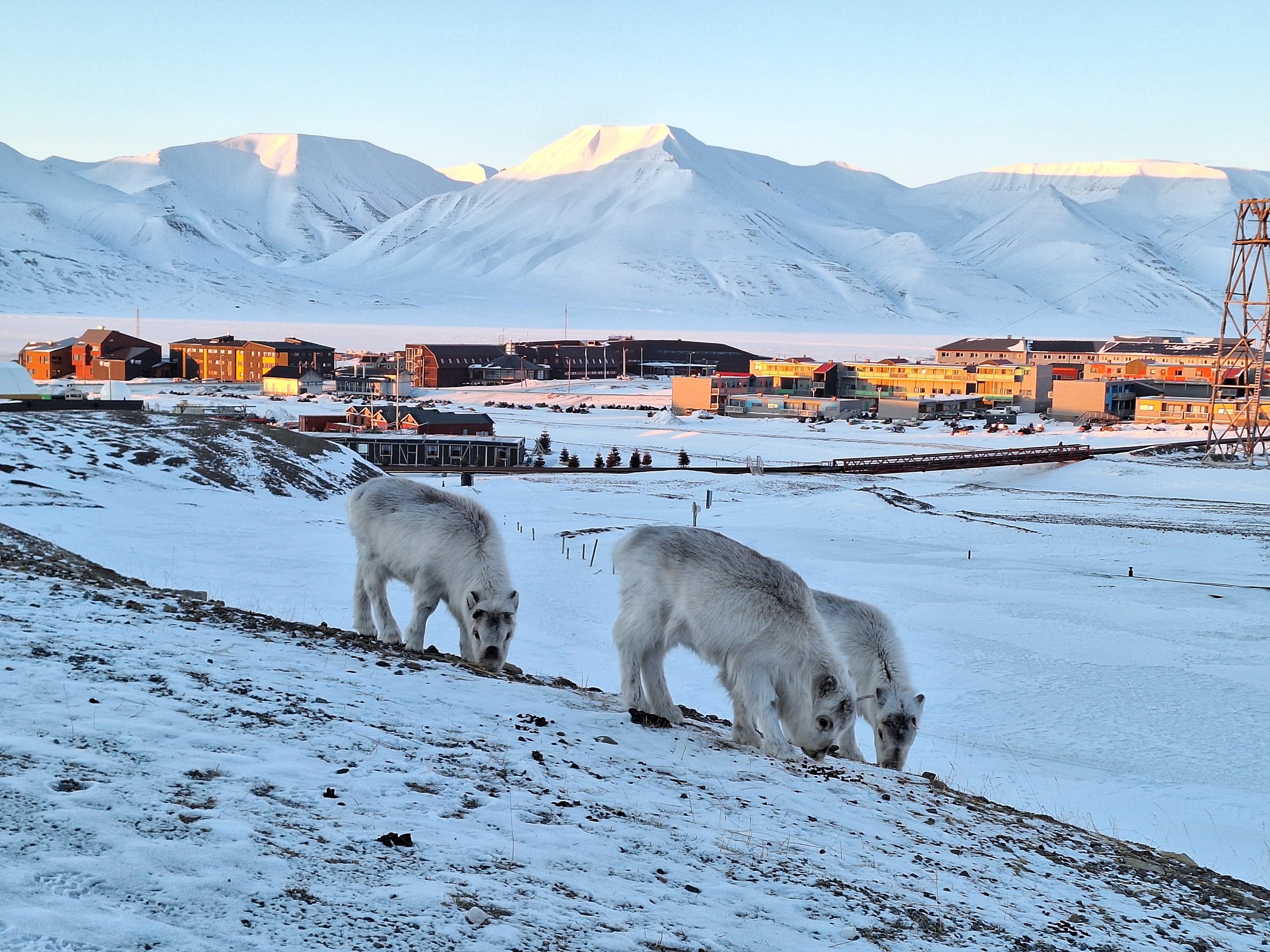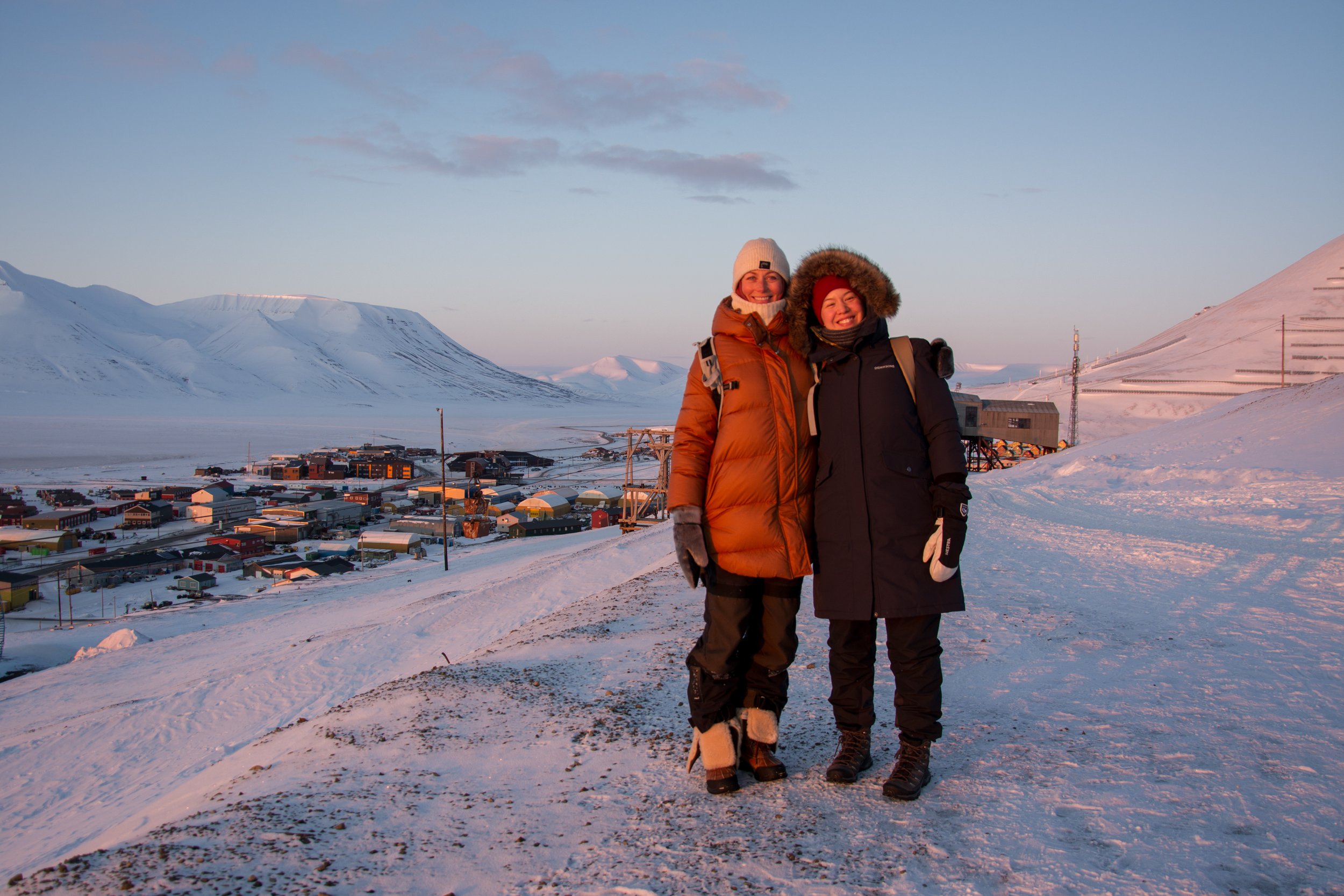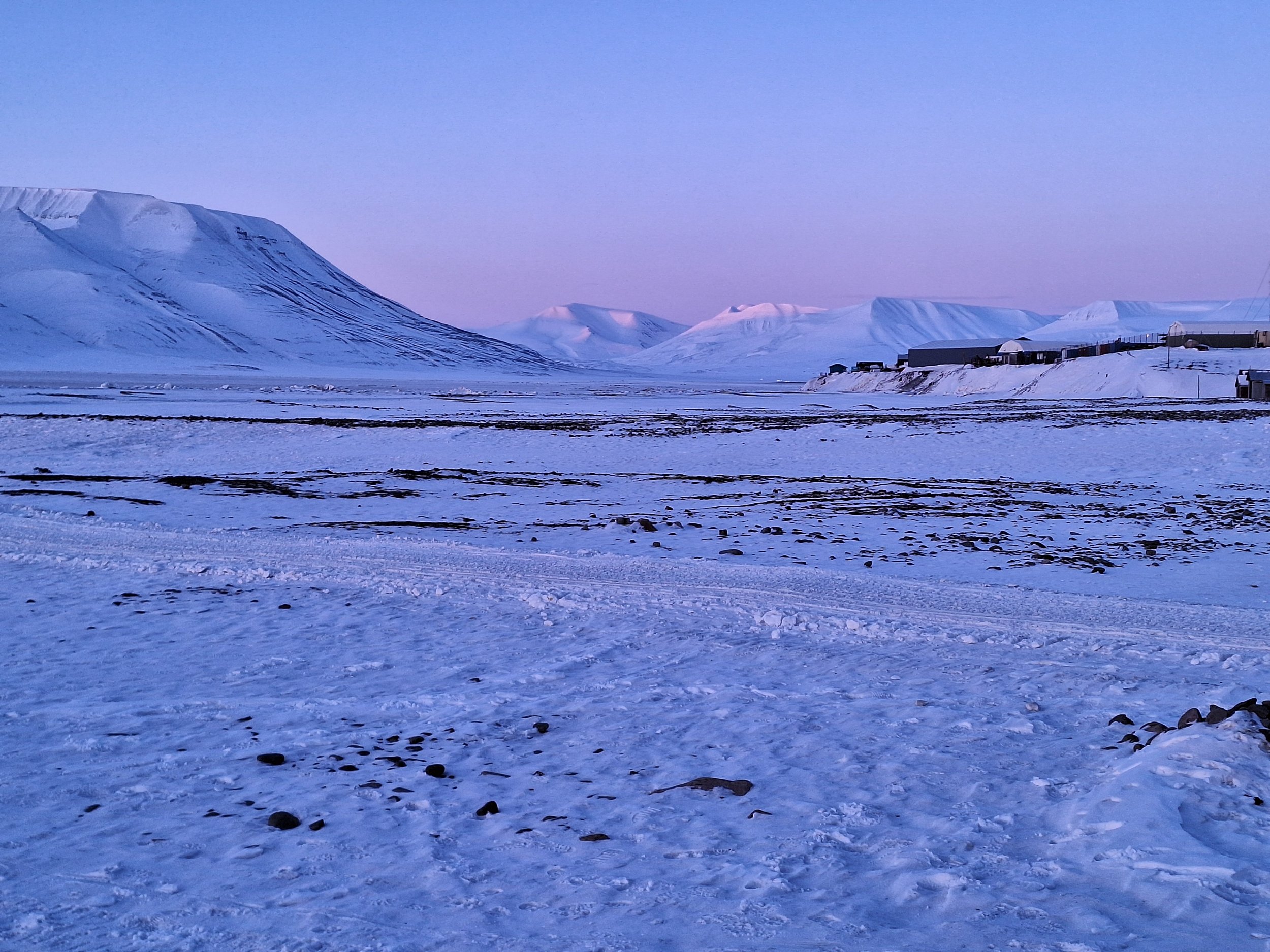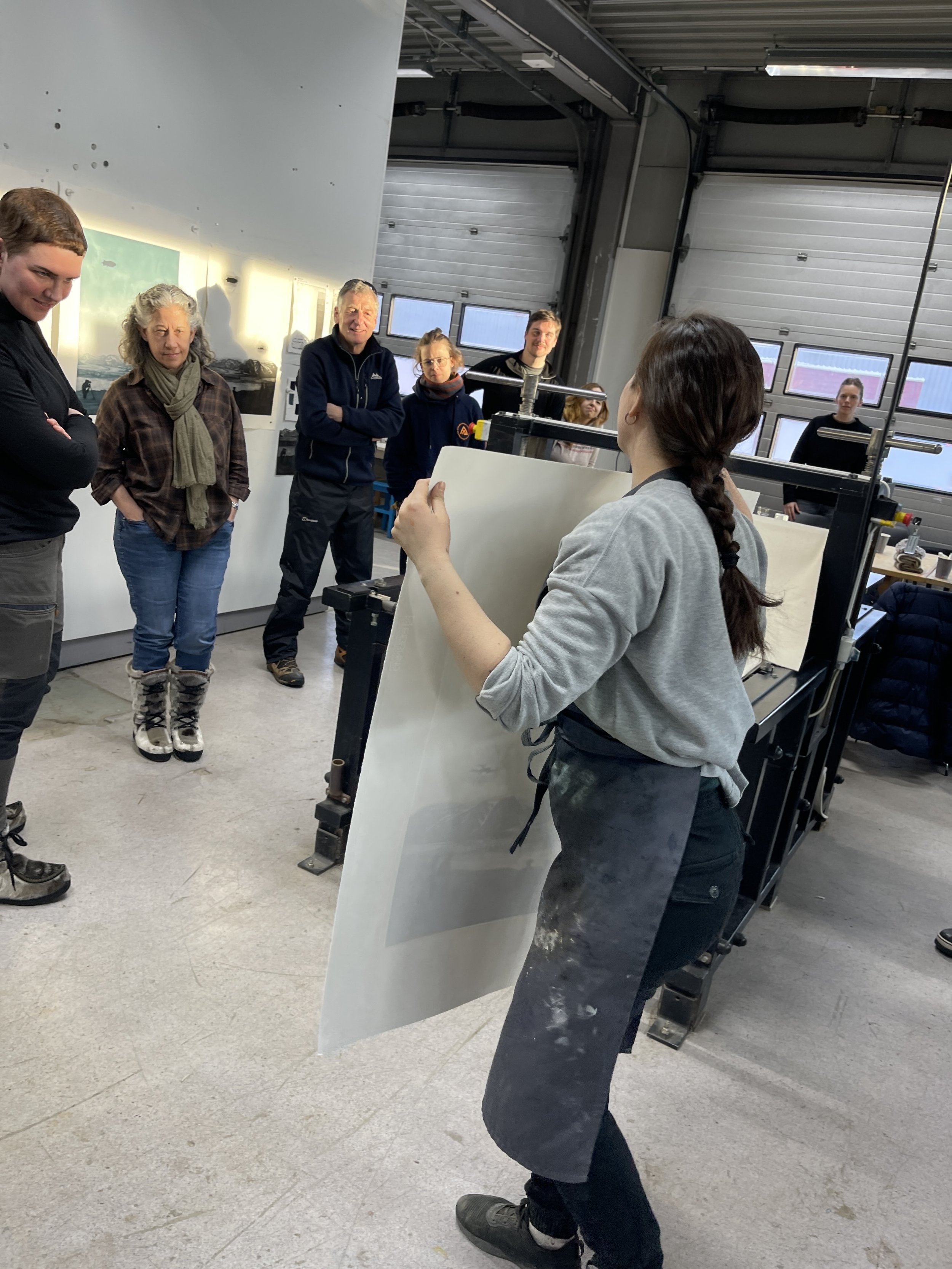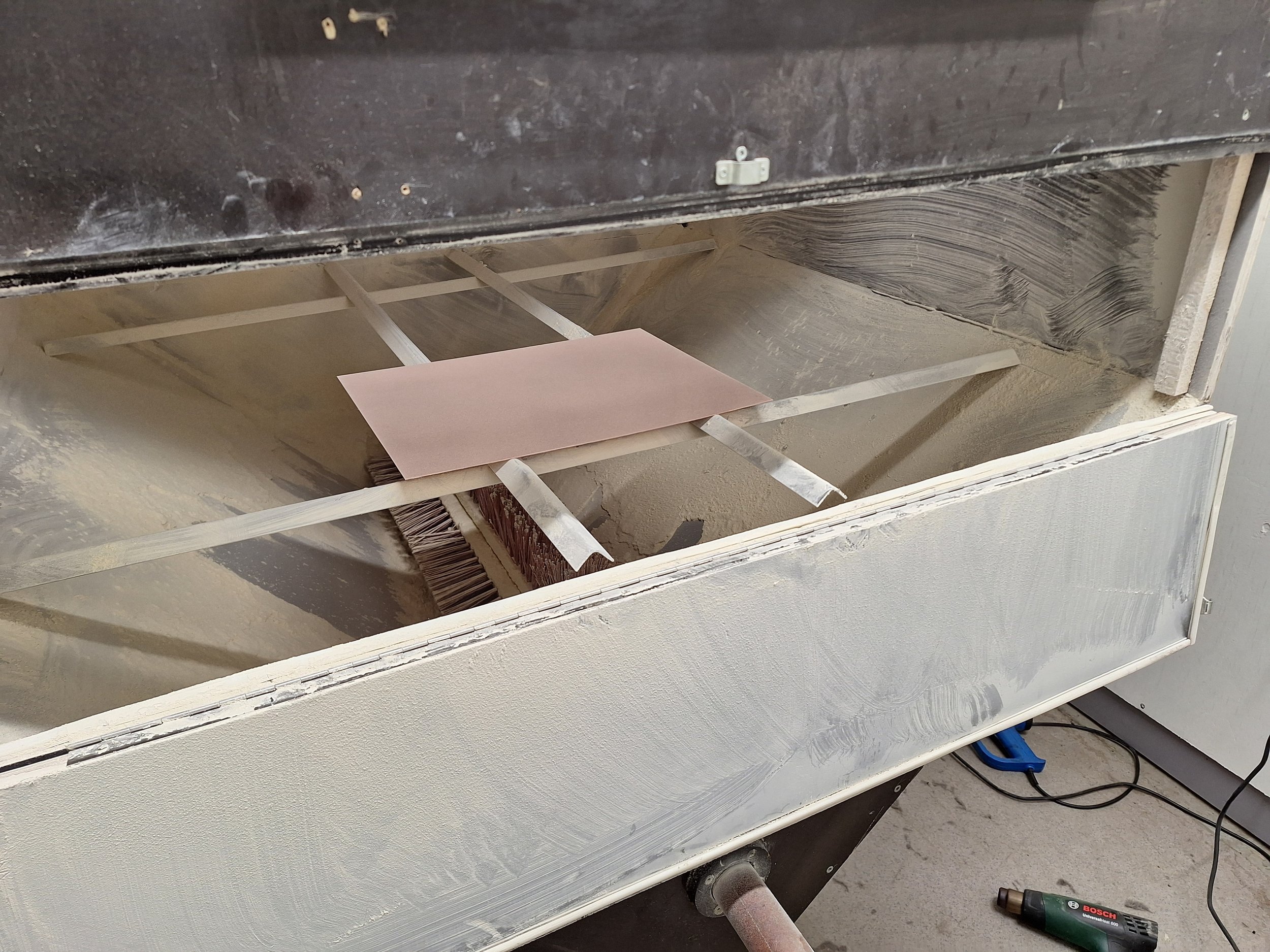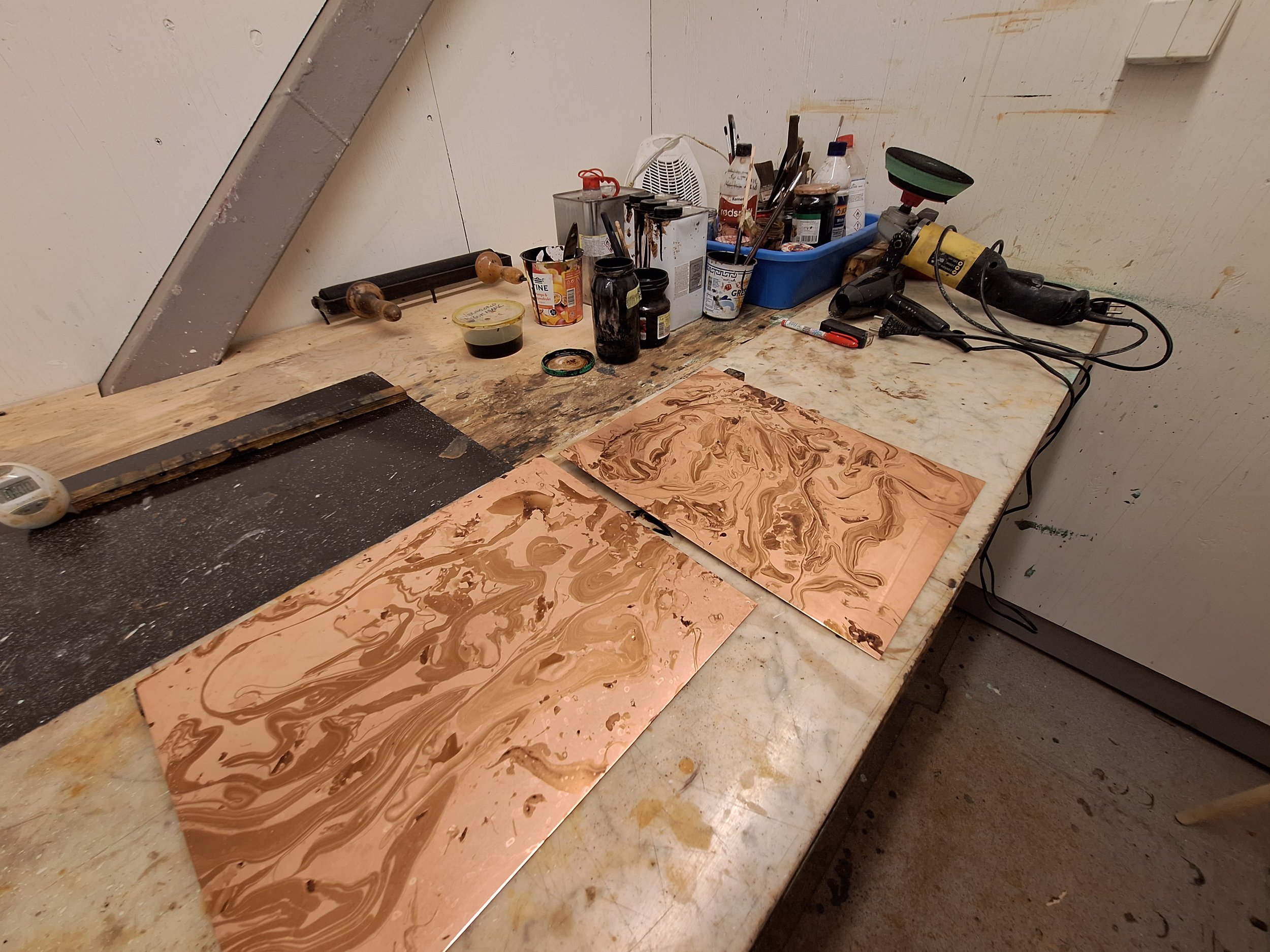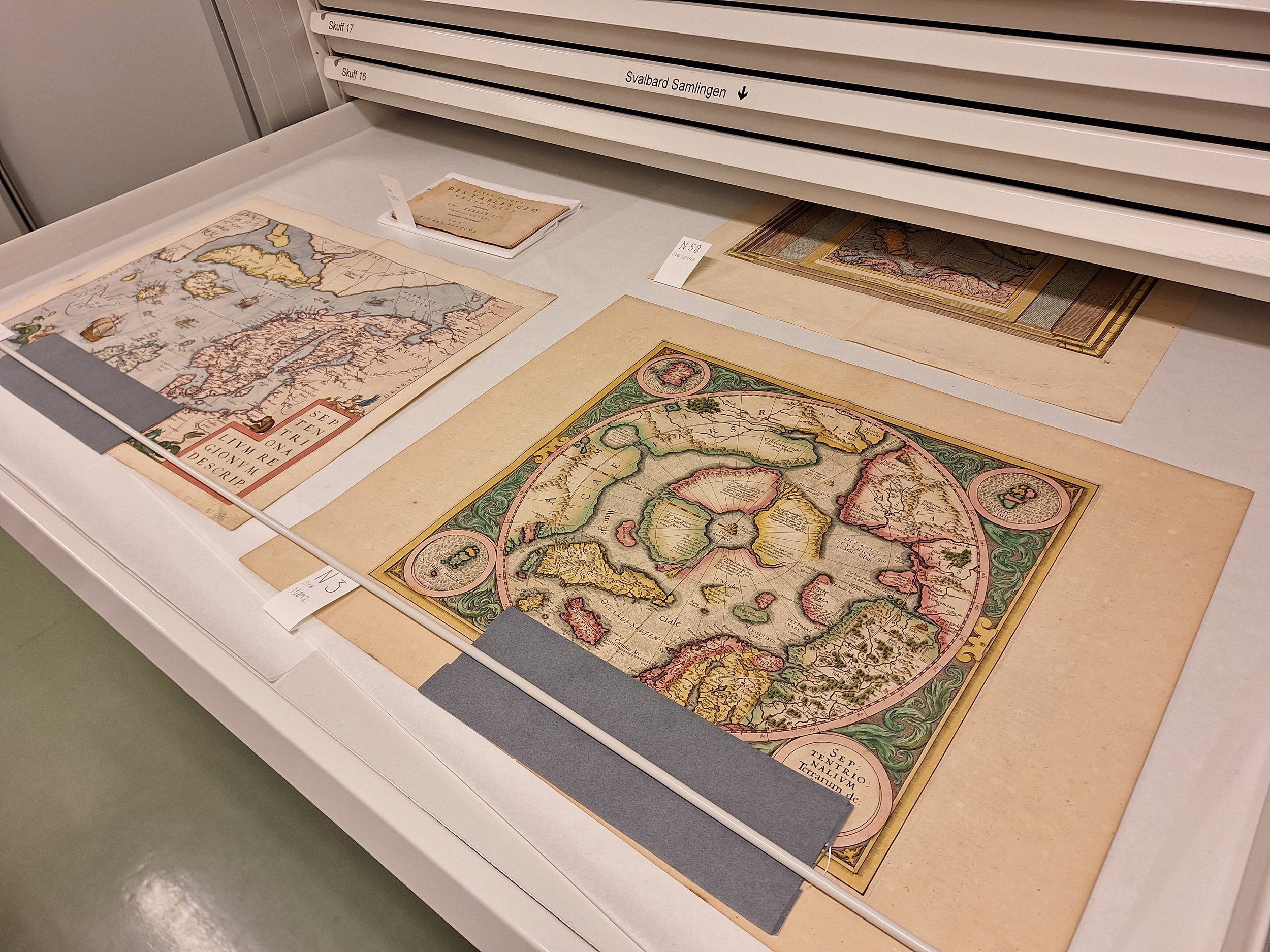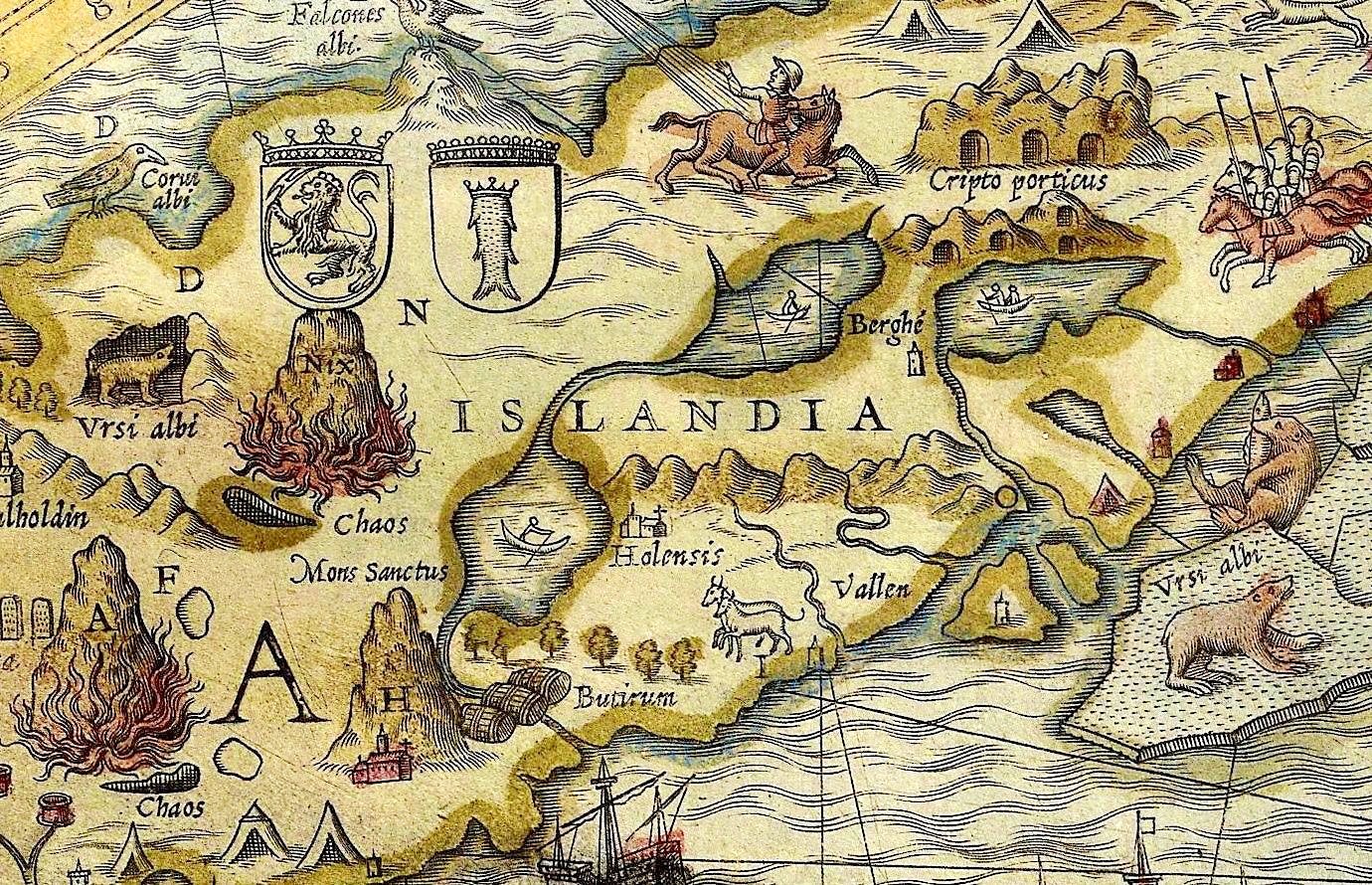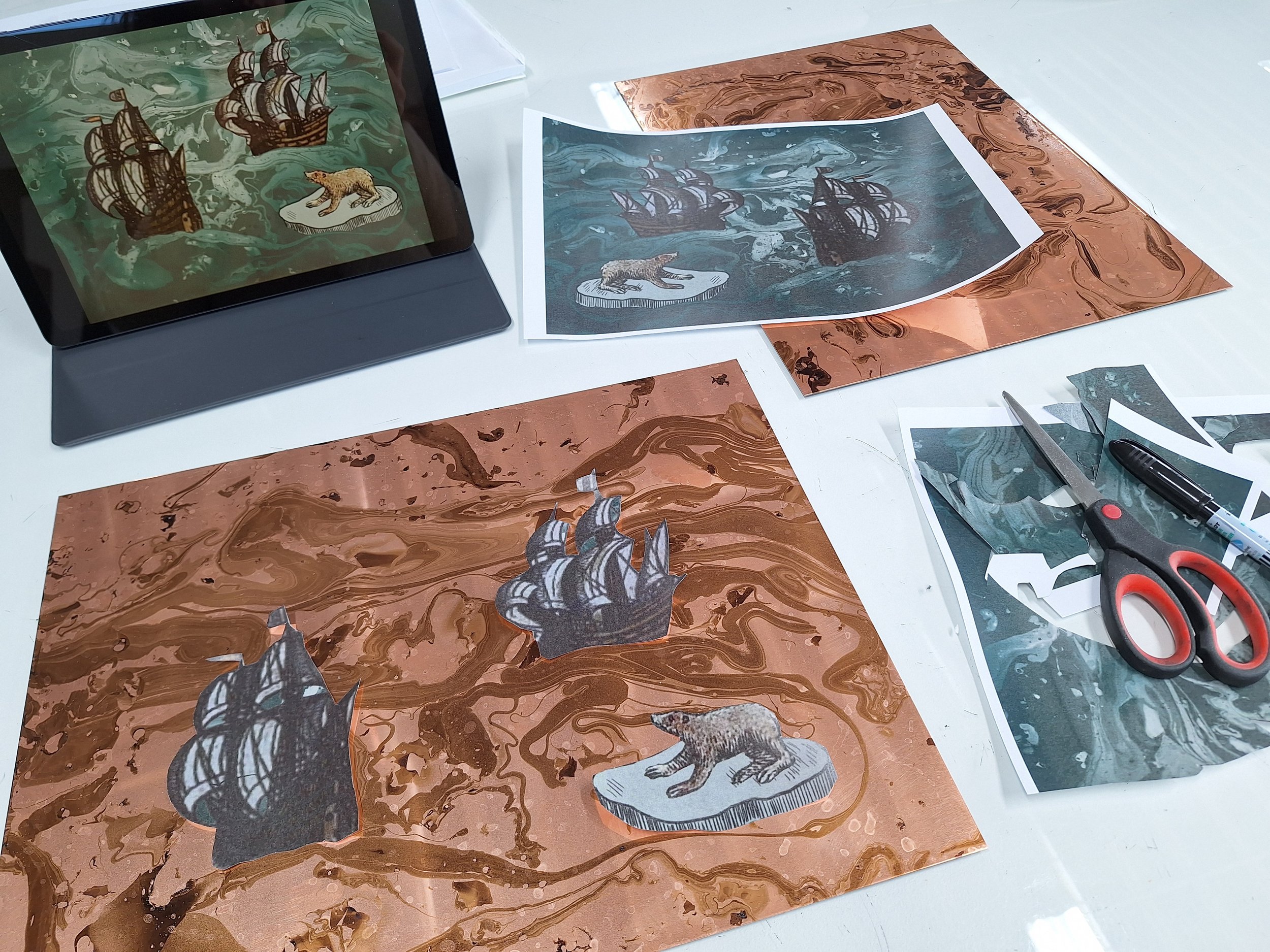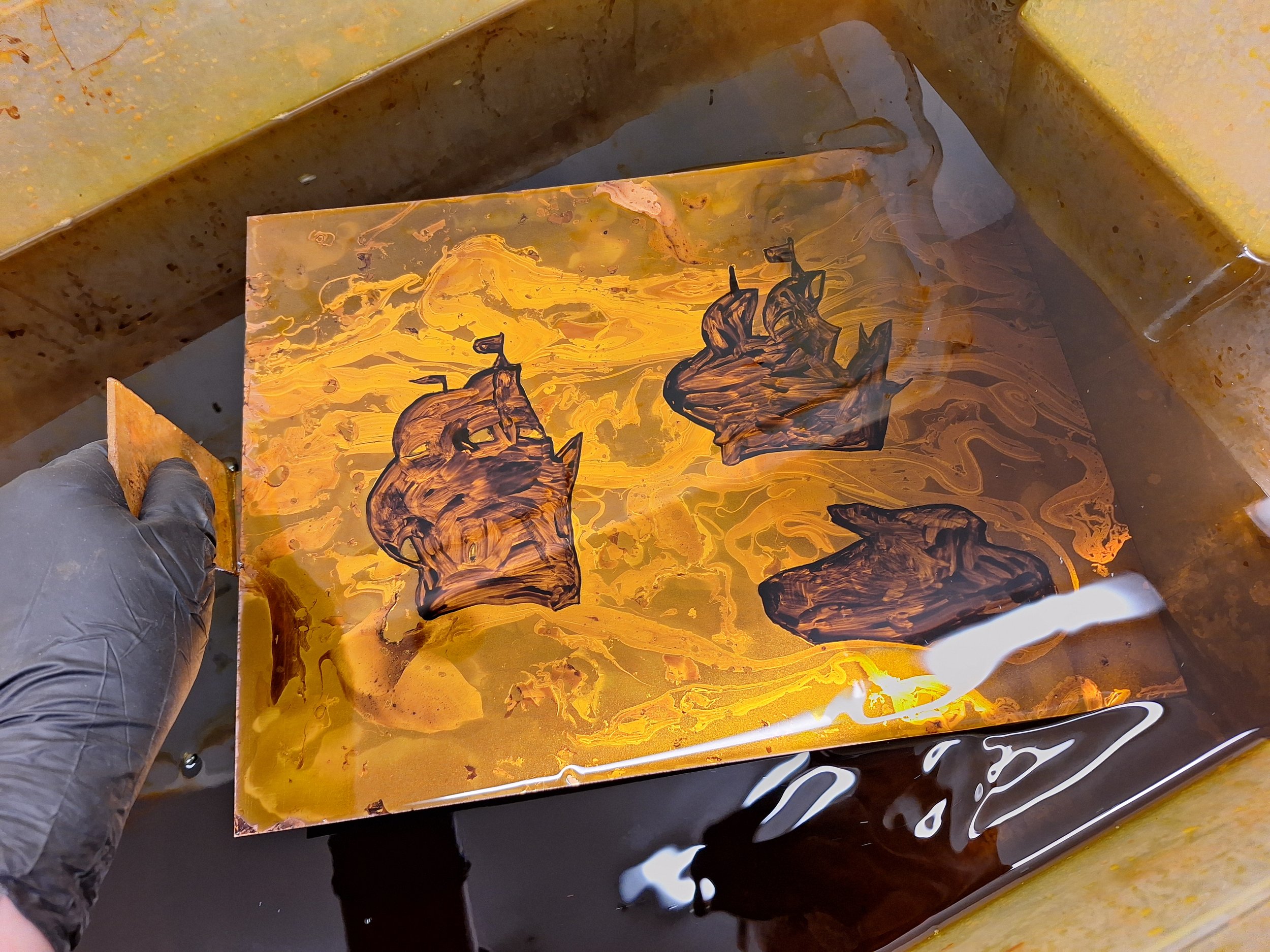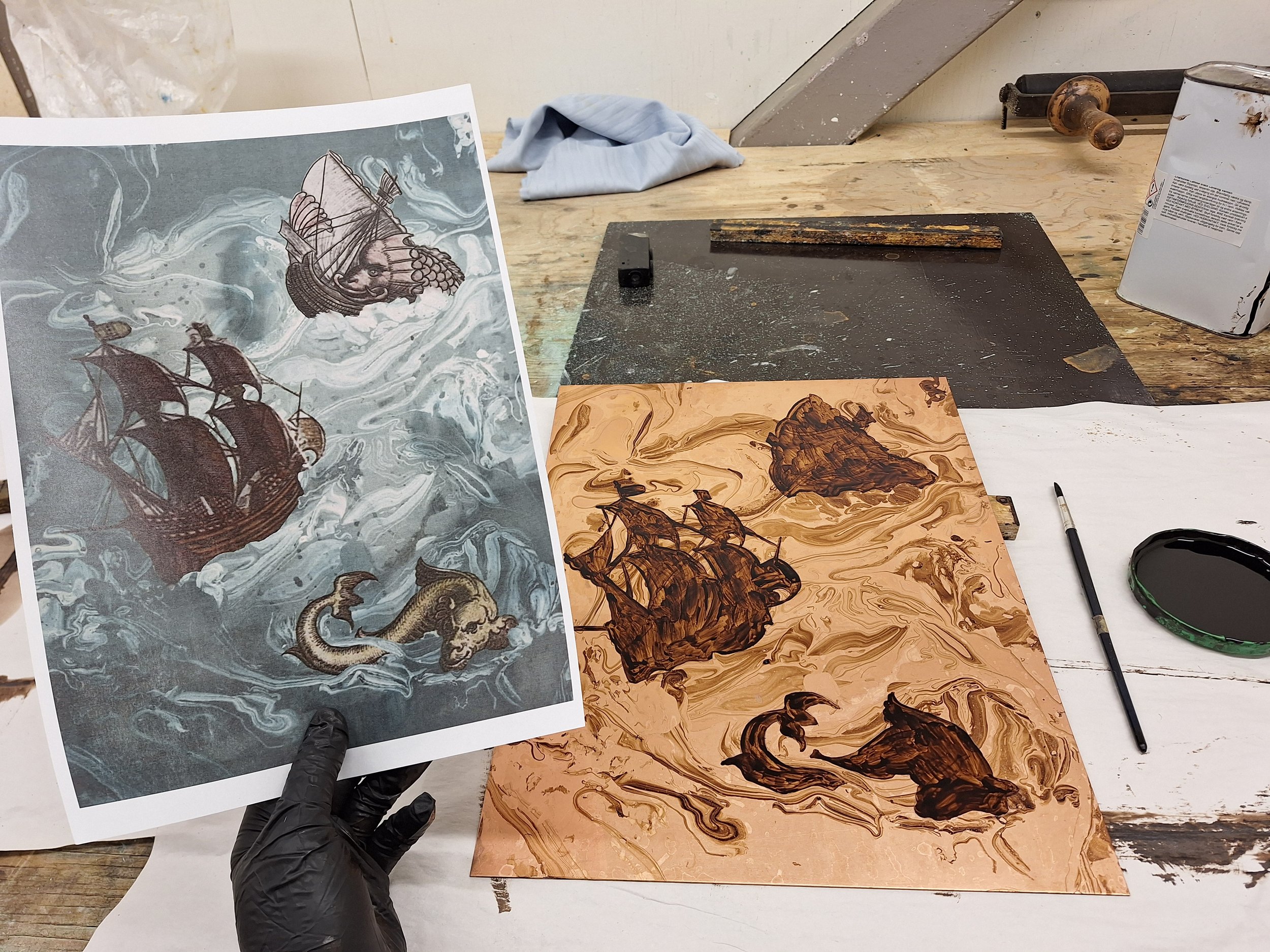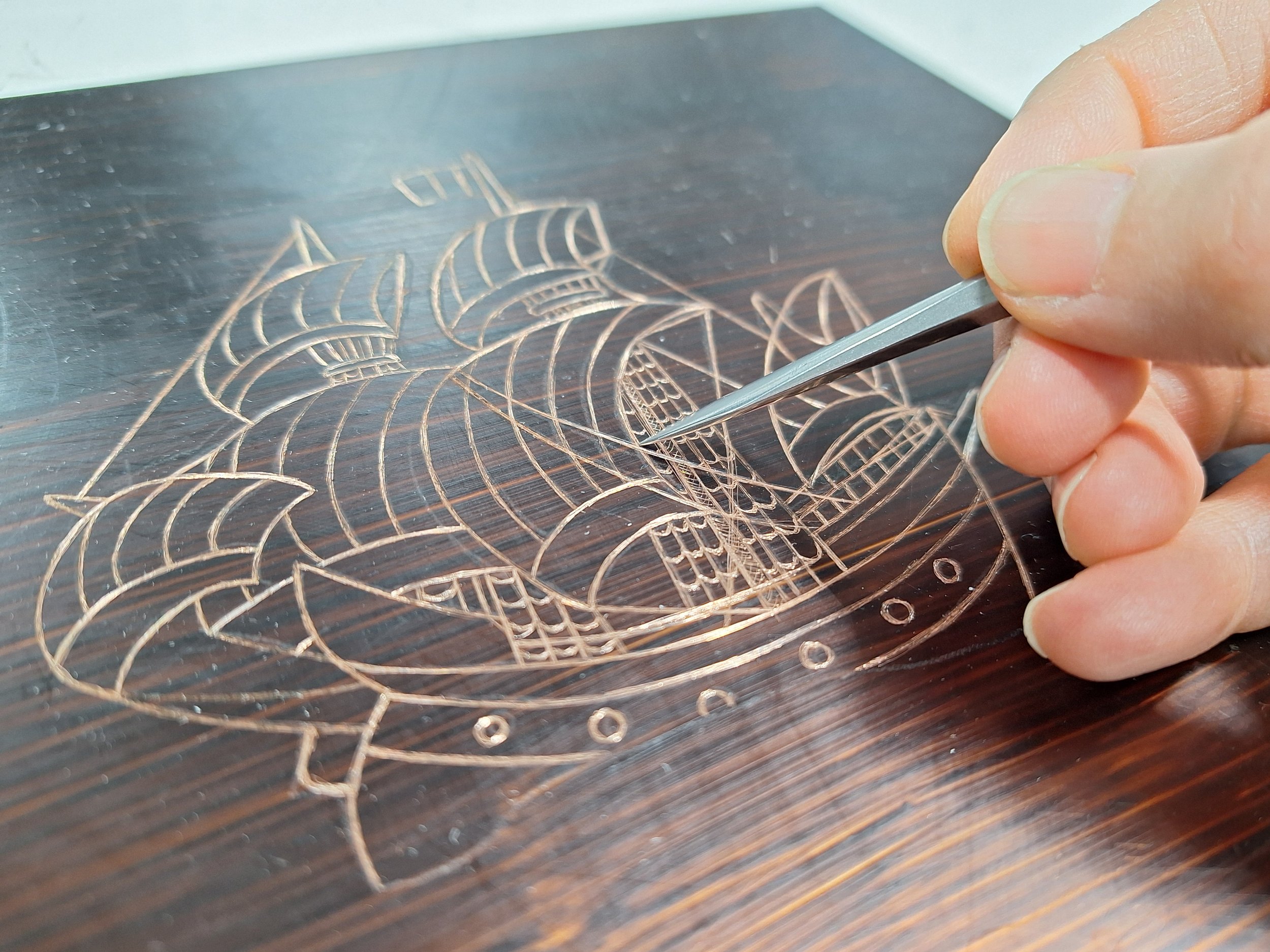I am now two-thirds through my epic Svalbard artist residency. Time flies by so fast, but at the same time I feel as if I have been here forever, because so much has happened in such a short amount of time, and I have managed to produce more art in two months than I have in these past two years combined. After experiencing what can be described as a bit of a mid-residency dip, it was good to once again spend a week exploring Svalbard and reminding myself of what a special place this is. I definitely want to make sure I make the last month in Longyearbyen count!
I kicked off the week by joining a bonfire party in the midnight sun together with artists and writers from the Arctic Circle Residency. I met lots of great new people (even meeting up with a long time Instagram-friend for the first time!), and it will definitely stand out as one of the most memorable and magical evenings during my time in Svalbard:
This week my parents finally made it up to 78 degrees north, and I have been very excited to show them all of the places I have come to love up here. To kick off their Svalbard experience, we travelled on Hurtigruten’s brand new hybrid-electric catamaran M/S Bard to see the mountains and hopefully spot some wildlife. While we did not spot any polar bears this time, we were so lucky to see three walrus swimming up close!
The captain of M/S Bard chooses the route according to weather conditions and recent wildlife sightings, and on this particular day we travelled westwards towards Coles Bay and Grumant, to which I had never been before. Abandoned in the mid sixties, Grumant was a Soviet mining settlement, and the nearby Coles Bay was from where they shipped out the mined coal. As a result, the hills of Coles Bay and Grumant are now scattered with the eerie remains of old buildings, as well as a graveyard and a railroad track. Seeing these dilapidated structures standing alone in the vast desolate landscape is chilling and fascinating. While many enjoy Svalbard mostly for its untouched nature - what I personally find the most fascinating is seeing how humans cope and survive in extreme conditions. It is hard to imagine that Grumant was once a buzzing and thriving settlement with over one thousand people. After the mining operations ceased in the sixties, some of the houses were taken down and moved to Barentsburg, a Russian coal mining town of 500 people which is still in operation at Svalbard.
After the invasion of Ukraine in February 2022, relations between the predominantly Norwegian town of Longyearbyen and the Russian town of Barentsburg have been icy cold. There are no roads connecting the settlements, so the mere 55 km separating the two need to be traversed by either boat, helicopter or snowmobile. Despite this, cultural exchanges and friendly sports competitions between Russians and Norwegians have always been a mainstay of Svalbard life - up until now. This week saw Norwegian Constitution Day (17th May), and spending it here must have been one of the most surreal experiences I have had. Not only because it was cold and I could not wear my usual finery, but because all the celebratory speeches were also held in Russian. Traditionally, Norwegian Constitution Day has first and foremost catered to the youngest - we have children’s parades rather than military parades, and the afternoon is always filled with family activities and children’s performances. For many years, the tradition at Svalbard has been to invite the children of Barentsburg to join in the festivities. In an isolated place like this, where Norwegian and Russian politics physically intersect, and local life vs. global interests are constantly being juggled, life is not always so black and white. For the sake of the youngest, local authorities have decided that war needs to take a break on what has, after all, been dubbed as “Children’s Day” in Norway. Interestingly, the waitress serving us in the evening turned out to be Russian, and upon asking her about popular beverages in Russia, she kindly served us tea prepared in the Russian way, accompanied by brandy. While I do not know what her story is, I am sure it must be challenging to be a Russian in Longyearbyen these days.
On the topic of Barentsburg - the town is actually named after Dutch explorer Willem Barentsz, who accidentally discovered Svalbard in 1596 on his misson to find the Northeast Passage to China. To round up my parents’ visit, we spent their last night at Camp Barentz, about 15 km outside of Longyearbyen. Organised by Hurtigruten, Camp Barentz offers a lovely bonfire meal of reindeer stew, wine, beer, aquavit, hot beverages and cake, accompanied by interesting lectures on Willem Barentsz and polar bears. The hut is a replica of the hut Barentsz and his men constructed on the Russian island of Novaya Zemlya in 1596, when they were forced to overwinter in the arctic after having discovered Svalbard. In order to construct their winter cabin, they had to use driftwood as well as wood from their ship, which was being crushed by the arctic ice. Only 12 of his men made it back to the Netherlands - Barentz himself sadly died of scurvy as they commenced on their return journey in small rowing boats.
My latest print, which is a rather intricate line etching in the making, actually refers to some of the Norwegian and Russian disputes in the Arctic, and how we are once again scrambling to secure our positions in the Northeast Passage which Barentsz was once trying to discover. With sea ice melting rapidly with each passing year, his dream of sailing across the shorter, northern sea routes to Asia is quickly becoming a reality, but also a potential geopolitical nightmare and headache. Combining elements from ancient maps of the Arctic, as well as my own sketches of cargo ships, ice breakers and various vehicles for polar exploration, I attempt to link together old and contemporary views of the northern terra nullius.















































